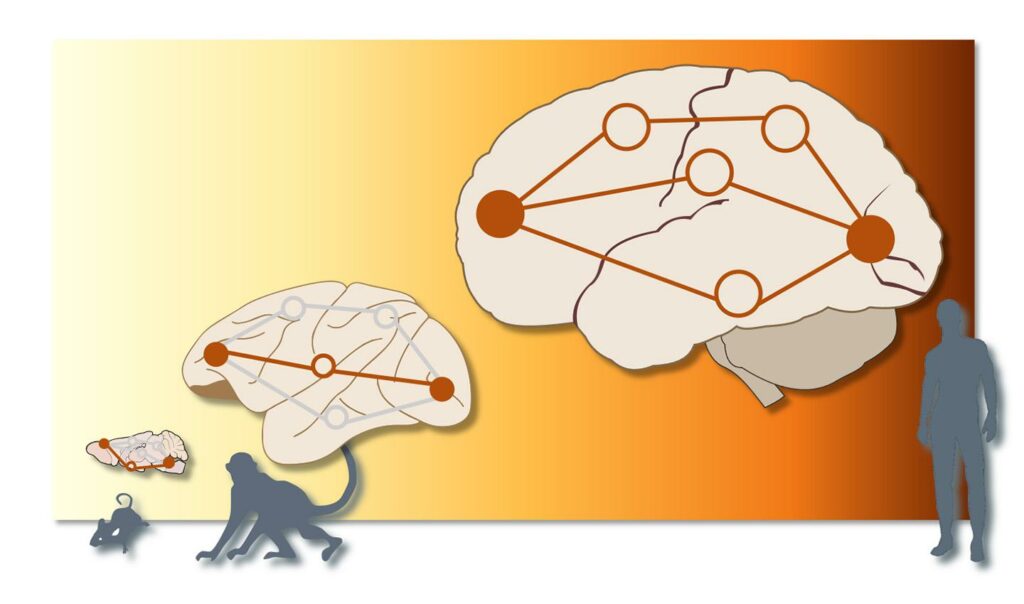EPFL researcher Alessandra Griffa, who likens brain communication to travel, studied how messages move through the brain. Using “brain traffic maps,” she and researchers Dimitri Van De Ville and Enrico Amico compared the patterns of information transmission in humans and other mammals.
They aimed to understand how signals travel along complex pathways, similar to a road with multiple stops, to reach their destination. Their study, recently published in Nature Communications, sheds light on the intricate networks of information flow in the brain.
The researchers used data from humans, macaques, and mice obtained through diffusion and functional MRI scans while the subjects were awake and resting. Diffusion scans helped create brain “road maps,” available MRI scans showed brain regions lighting up along these paths, indicating the transmission of neural information.
They applied information and graph theory to analyze the data, combining two branches of mathematics. This unique approach provided fresh insights into how messages travel in the brain.
The study’s novelty lies in using multimodal data in a single model that combines graph theory, describing the brain “roadmaps,” and information theory, mapping information transmission along these pathways. The basic idea is that messages sent from a source to a target either stay the same or degrade at each stop, similar to the telephone game in childhood.
The researchers found that information traveled along one “road in non-human brains.” However, in humans, there were many parallel pathways between the same starting and ending points. These similar pathways, like fingerprints, were unique to each individual, allowing for identification. This kind of parallel processing in human brains, hypothesized before, was observed for the first time at a whole-brain level, according to Griffa.
The researchers’ simple model offers potential insights for evolution and medicine. Griffa says the model can inspire new perspectives in fields like evolution and computational neuroscience. The findings may be connected to the growth in human brain volume over time, leading to more intricate connectivity patterns.
Griffa suggests a hypothesis: the parallel information streams in the human brain might allow for multiple representations of reality and the ability to perform abstract functions unique to humans. While this idea is speculative and wasn’t tested in the Nature Communications study, Griffa expresses interest in exploring these questions in future research, particularly regarding computational and cognitive abilities.

The researchers exploring how information travels in the brain now want to take a step further. They aim to model more complex processes to understand how data is combined and processed in the brain to create something new.
As a memory and cognition researcher, Griffa is keen to use the developed model to investigate whether parallel information transmission can make brain networks more resilient. This could play a role in neurorehabilitation after brain injury or in preventing cognitive decline in aging.
Griffa mainly studies the relationship between healthy aging and cognitive decline. She wants to explore whether parallel information streams are linked to these differences and whether they could be trained to compensate for neurodegenerative processes.
This study provides valuable insights into the distinctive patterns of information transmission in human brains compared to animals, laying the groundwork for further exploration in evolution, neuroscience, and medical applications.
Journal reference:
Griffa, A., Mach, M., Dedelley, J. et al. Evidence for increased parallel information transmission in human brain networks compared to macaques and male mice. Nature Communications. DOI: 10.1038/s41467-023-43971-z.
>>> Read full article>>>
Copyright for syndicated content belongs to the linked Source : Tech Explorist – https://www.techexplorist.com/human-brains-show-greater-parallel-traffic-animal-brains/79033/































